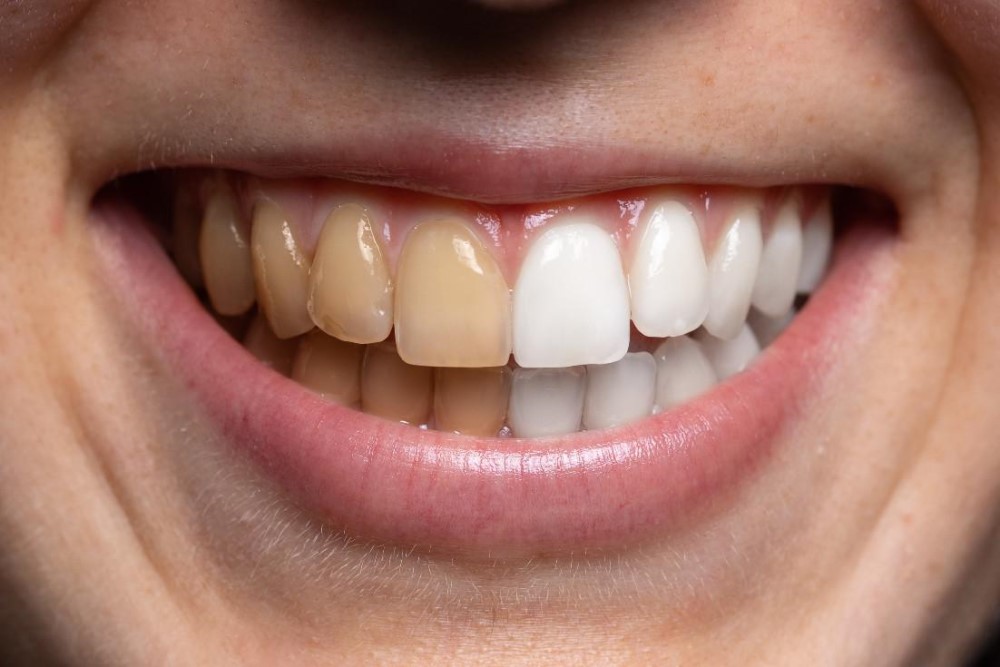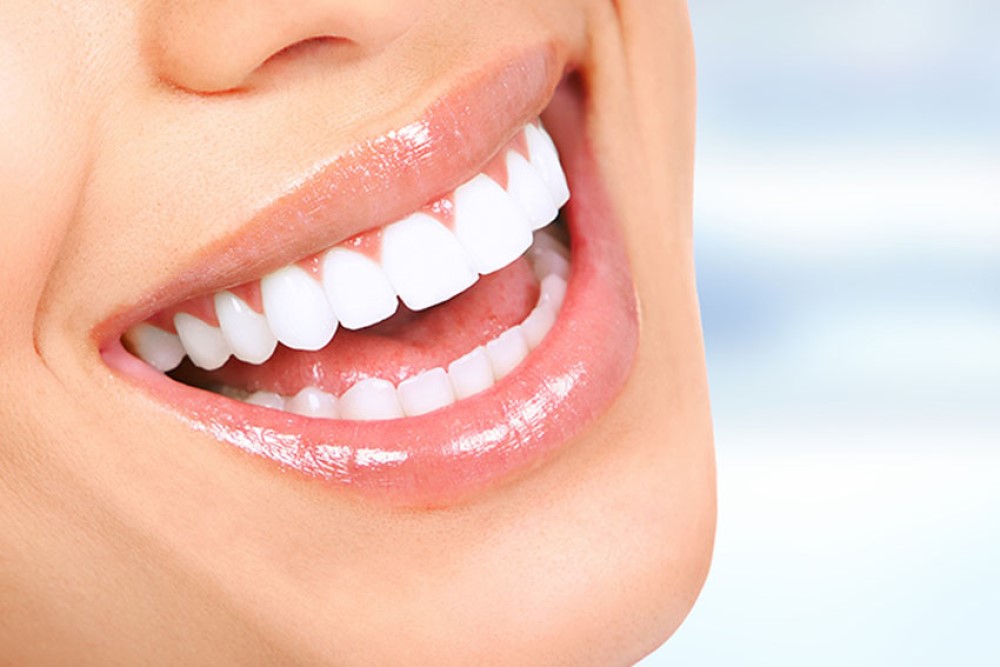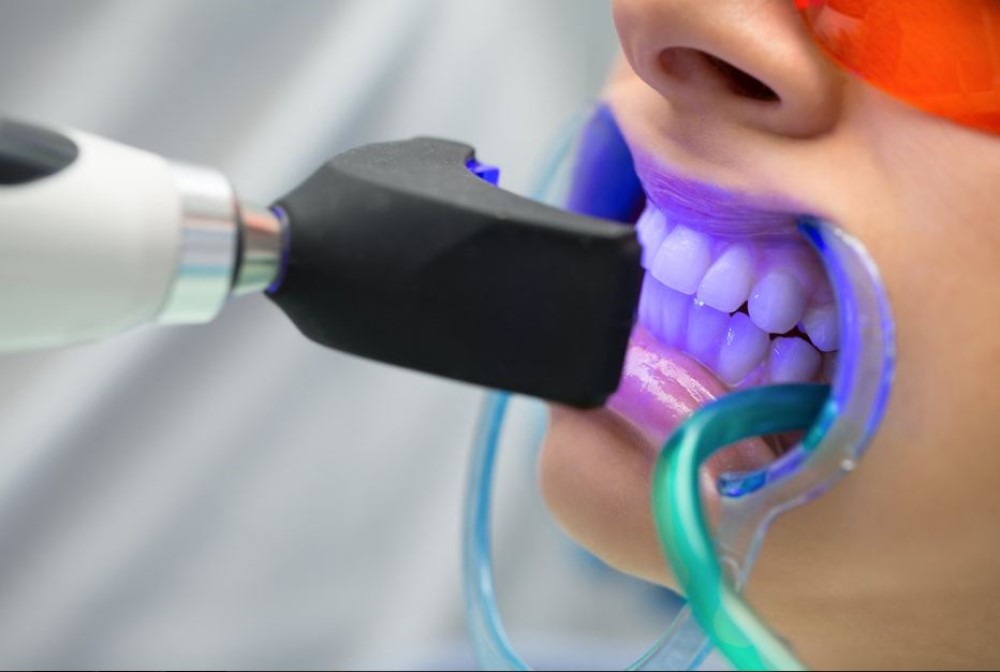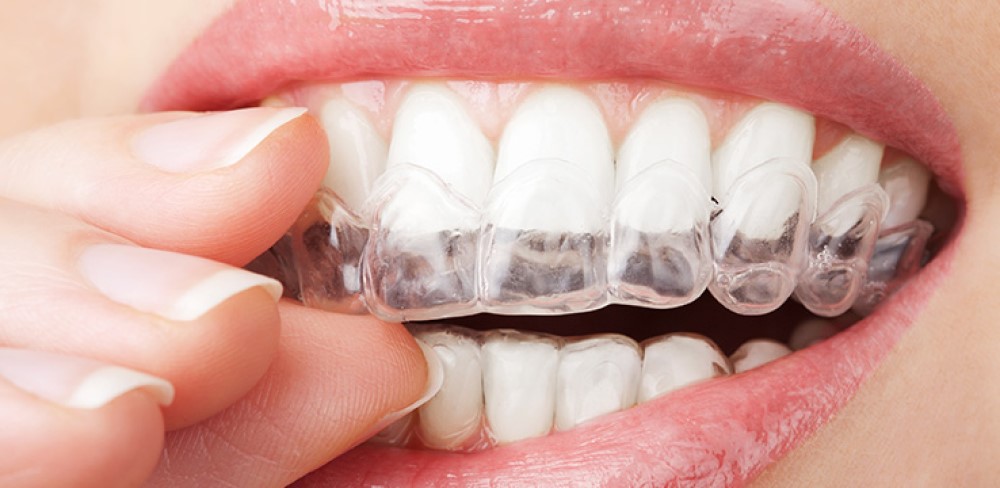In the quest for whiter teeth, a multitude of teeth whitening methods have emerged, promising radiant results. From at-home remedies to professional treatments, the array of options can be overwhelming. In this post, we will learn what teeth whitening is and the most effective teeth whitening methods available today.
Types of teeth stains
Teeth stains can be categorized into two main types: extrinsic stains and intrinsic stains.
Extrinsic Stains:
- Surface Stains: These stains affect the outer layer of the tooth enamel. They are often caused by consuming stain-causing foods and beverages like coffee, tea, red wine, and berries. Smoking or using tobacco products can also lead to extrinsic surface stains.
- Plaque and Tartar Stains: Plaque is a sticky film of bacteria that constantly forms on your teeth. If not removed through proper oral hygiene, it can harden into tartar (calculus), which can cause yellow or brown stains on your teeth.
- Stains from Poor Oral Hygiene: Inadequate brushing and flossing can lead to extrinsic staining over time, as plaque and debris accumulate on the teeth.
Intrinsic Stains:
- Dental Fluorosis: This condition occurs when excessive fluoride is ingested during tooth development, leading to white or brown spots on the teeth.
- Medication-Related Stains: Some medications, like tetracycline antibiotics, can cause intrinsic staining in developing teeth, resulting in gray or brown discoloration.
- Trauma: Injury to a tooth can damage the pulp inside and cause the tooth to darken or become discolored.
- Aging: Over time, teeth naturally tend to darken and yellow as the enamel thins and the dentin underneath becomes more visible.
- Genetic Factors: Some individuals may have naturally darker or more yellowish teeth due to genetic factors.

What is teeth whitening?
Teeth whitening is a cosmetic dental procedure designed to lighten the color of your teeth and reduce stains and discoloration. It’s a popular treatment for enhancing the appearance of your smile by making your teeth appear brighter and whiter.

Who should get their teeth whitened?
Teeth whitening is a cosmetic procedure, so it’s generally suitable for individuals who are looking to improve the appearance of their teeth by making them appear brighter and whiter. However, there are considerations and factors to keep in mind when deciding if teeth whitening is right for you:
- Staining or Discoloration: Teeth whitening is most effective for individuals with extrinsic stains, such as those caused by coffee, tea, red wine, smoking, or poor oral hygiene. It can also be effective for some intrinsic stains, but the degree of improvement may vary.
- Good Oral Health: Before undergoing teeth whitening, it’s important to have a healthy mouth. Gum disease, cavities, and other dental issues should be addressed and resolved before whitening to avoid potential complications.
- Age: Teeth naturally darken with age, so many people seek teeth whitening to counteract the effects of aging and maintain a youthful appearance.
- Event or Occasion: Some individuals choose teeth whitening before special occasions like weddings, job interviews, or reunions to boost their confidence and look their best.
- Personal Aesthetic Goals: If you’re dissatisfied with the color of your teeth and it affects your self-confidence, teeth whitening can help you achieve your desired smile.
- Realistic Expectations: It’s essential to have realistic expectations about the results of teeth whitening. While it can significantly improve the brightness of your teeth, it may not provide the same level of whitening for everyone, and the results can vary.
- Consultation with a Dentist: Before undergoing teeth whitening, it’s advisable to consult with a dentist. They can assess your dental health, evaluate the type and severity of staining, and recommend the most appropriate whitening method for your specific needs.

Popular teeth whitening methods
Several teeth whitening methods are popular and widely used to brighten and enhance the appearance of teeth. Here are some of the most popular teeth whitening methods:
- Whitening Toothpaste: Whitening toothpaste is a straightforward and convenient option for gradually removing surface stains. These toothpastes often contain mild abrasives and chemical agents like hydrogen peroxide to help lighten teeth over time.
- Whitening Strips: Whitening strips are thin, flexible plastic strips coated with a peroxide-based gel. You apply them to your teeth and wear them for a specified time each day, typically for a few weeks. They are available over-the-counter and provide noticeable results.
- Professional Teeth Whitening: Professional teeth whitening, performed by a dentist, is the most effective and quickest way to achieve significant whitening results. It involves the use of a stronger peroxide solution and specialized equipment for rapid and often dramatic results. There are in-office treatments and take-home kits provided by dentists.
- Activated Charcoal Products: Some people use activated charcoal toothpaste or powders for teeth whitening. These products claim to remove surface stains through abrasion. However, they can be abrasive and should be used with caution.
- Baking Soda-Based Products: Products with baking soda as an active ingredient can help scrub away surface stains. They are typically milder than activated charcoal products.

Teeth whitening side effects
Here are some potential side effects associated with teeth whitening:
- Tooth Sensitivity: One of the most common side effects of teeth whitening is tooth sensitivity. This can manifest as temporary discomfort or pain when consuming hot or cold foods and beverages. Sensitivity usually subsides within a few days to a week after treatment.
- Uneven Whitening: Inconsistent results, where some teeth appear whiter than others, can occur, particularly with over-the-counter products or when whitening is not performed evenly.
- Enamel Damage: Excessive or frequent use of strong whitening agents can potentially damage tooth enamel. This can lead to permanent tooth sensitivity and other dental problems.
- Relapse: Teeth can gradually darken again over time, especially if stain-causing foods and drinks are consumed regularly.
- Allergic Reactions: In rare cases, people may experience allergic reactions to the ingredients in whitening products, leading to discomfort or swelling in the mouth.

Conclude
In conclusion, teeth whitening can be an effective way to enhance your smile’s appearance, but it’s essential to be aware of potential side effects. Tooth sensitivity and gum irritation are common but usually temporary. To minimize risks, consult a dentist, follow product instructions, and consider professional treatments for safer and more controlled results.


